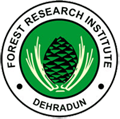
Chandigarh Forest Flora
A Comprehensive Database of Ligneous Plants of Chandigarh (India)
Designed & Developed by Bioinformatics Centre, Forest Research Institute, Dehradun



| Family: Anacardiaceae | Genus: Spondias | Species:
Spondias
pinnata (L. f.) Kurz
|
Habit |
Leaf |
Flower |
Fruit |
Bark |
| Synonym | Spondias mangifera Wild., Spondias acuminata Roxb., Spondias amara Lam. | Flower Color | White |
| Common Name | Ambara, Wild Mango | Flower Type | Panicle |
| English / Trade Name | Wild mango, Indian Hog Plum, Hog plum | Flowering Period | April-June |
| Vernacular /Local Name | Amra | Fruiting Period | July-Sept |
| Altitude | Upto 1500 m | Fruit Type | Drupe |
| Habit | Tree | Fruit Details | Drupe, Ovoid, 1.5-5 × 1-3.5 Cm, Aromatic, 1-3 Seeded |
| Habitat | Occasional in evergreen to moist deciduous forests | Bark Type | Smooth |
| Distribution | Indo-Malesia | Bark Details | Bark 15-25 mm thick, surface grey to pale brown, smooth, vertically striated; outer bark 1 mm thick, dead, corky; inner bark semi fibrous, pink, streaked with white; blaze pink; exudation colour less, gummy. |
| Distribution in chandigarh | Chandigarh Botanical Garden and Nature Park | Origin | Native |
| Leaf Type | Compound | ||
| Leaf Arrangement | Alternate (leaves born singly along stem) | ||
| Leaf Shape | Elliptic | ||
| Description of Species | Deciduous trees, to 25 m high, bark 15-25 mm thick, surface grey to pale brown, smooth, vertically striated; outer bark 1 mm thick, dead, corky; inner bark semi fibrous, pink, streaked with white; blaze pink; exudation colour less, gummy. Leaves imparipinnate, alternate, clustered at the end of branches, estipulate; rachis 25-45 cm, slender, glabrous, swollen at base; leaflets 5-21, opposite or subopposite; petiolule 2-8 mm long, slender, glabrous; lamina 4-23 × 2.5-10 cm, oblong, elliptic or elliptic-oblong, base obtuse, subacute, oblique or round, apex acuminate or obtusely acuminate, margin entire, glabrous, chartaceous or membranous; lateral nerves many, parallel, close, slender, prominent, connected by an intramarginal nerve, intercostae reticulate. Flowers polygamous, yellowish-white, subsessile, in terminal spreading panicles; calyx small; lobes 5, imbricate, deciduous; petals 5, oblong, glabrous, spreading, valvate; disc thick, annular, 10-crenate; stamens 10, inserted below the disc; filaments slender; anthers versatile; ovary ovoid or subglobose, superior, immersed in the disc, 5-celled, 1 ovule in each cell, pendulous; styles 5, connivent; stigma spreading. Fruit a fleshy drupe, 3.8-5 cm long, yellow, endocarp woody surround by longitudinal interwoven fibres; seeds 1-3, of which only one is perfect, pendulous, oblong. | Leaf Details | Leaves imparipinnate, alternate, clustered at the end of branches, estipulate; rachis 25-45 cm, slender, glabrous, swollen at base; leaflets 5-21, opposite or subopposite; petiolule 2-8 mm long, slender, glabrous; lamina 4-23 × 2.5-10 cm, oblong, elliptic or elliptic-oblong, base obtuse, subacute, oblique or round, apex acuminate or obtusely acuminate, margin entire, glabrous, chartaceous or membranous; lateral nerves many, parallel, close, slender, prominent, connected by an intramarginal nerve, intercostae reticulate. |
All rights reserved by Forest Research Institute, Dehradun